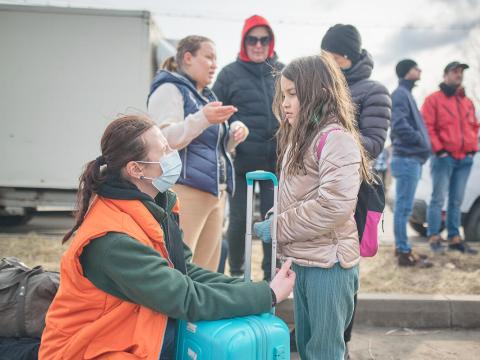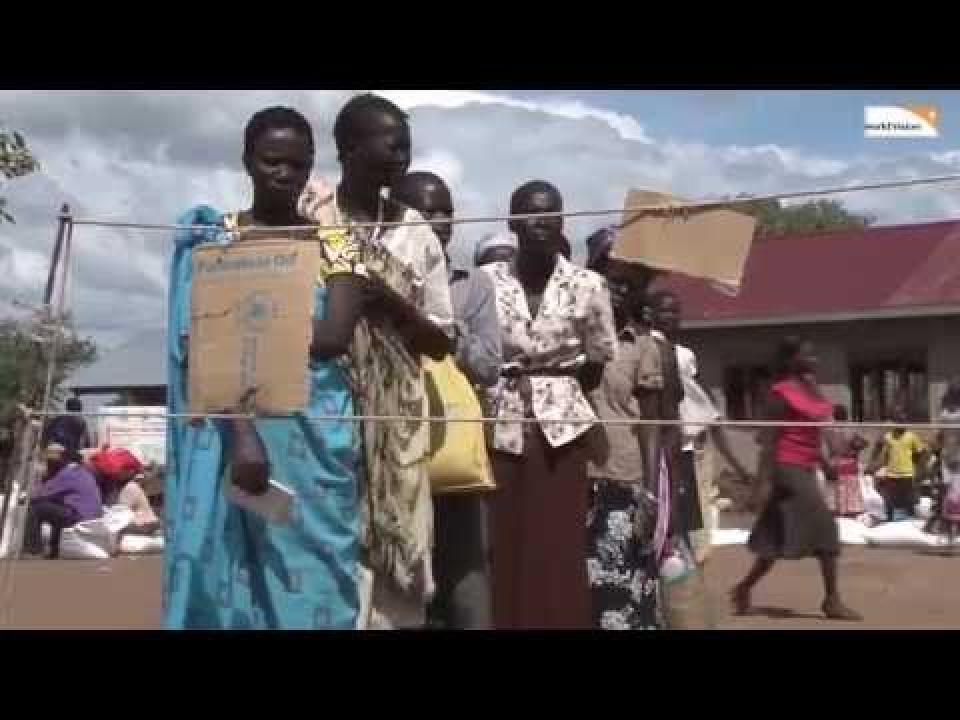
Ukraine is just one of 52 disasters
In the wake of the Ukraine crisis, Jan considers how World Vision also manages the overwhelming challenge of responding to more than 50 emergencies globally.
29 March, 2022
Much aid agency communications tends to align with news headlines. With so much social media content to distract people, it is still the case that a strong Guardian or Al Jazeera article is worth a thousand tweets. So, when a major disaster is in the news, we try to secure headlines so the public knows we are responding.
Currently, World Vision’s communications and PR departments are working hard to produce and share with new media content from our work responding to the heart-breaking effects of the conflict in Ukraine. But just this morning I received an email reminding me of 51 other emergency responses World Vision is working on.

Not all are our highest categorisation - Category III Global Response, like Ukraine - but 38 are Category III meaning they are priority projects for our staff. Lots are Sustained Humanitarian Responses, in other words, the disaster just keeps on going, and we just keep responding. But whatever their categorisation, they all matter, as do the people caught up in them.
Many, including our Venezuela, Uganda, Afghanistan, Syria and South Sudan responses involve helping refugees and internally displaced people survive and thrive. Some are caused by conflict, others natural disasters like Hurricane Eta’s impact on Nicaragua and Guatemala; Mount Nyirangongo’s volcanic eruption in DRC; and flooding in Southern India and Indonesia. COVID-19 is still an emergency in so many countries. But, aside from Ukraine, perhaps the emergency that is looming largest is the food crisis leaving millions starving.

A recent View article highlighted just some of the countries that are at risk because the conflict in Ukraine is making the food shortages worse. Often this is the way that we communicators are able to tell the stories from the other 51 crisis – by linking it to the issue deemed most newsworthy by the media at that moment in time. Journalist Eric Pooley once wrote of TV news priorities, “If it bleeds it leads”. World Vision is helping more than 30 million people across the 52 countries experiencing emergencies across five continents. The truth is that so many people are ‘bleeding’ and suffering in so many countries they all deserve time on the evening news and attention from the public. They all deserve a slice of the limited overseas development aid from generous governments around the globe. There is sadly, only so much of both.
All this suffering, all this struggle to keep children fed, and safe, could and does from time-to-time become overwhelming. There are still so many children and young people around the world fighting just to survive, let alone thrive. Knowing that a percentage of children and their communities in these countries benefit from our long-term development programming paid for by child sponsorship and other incomes is a source of comfort. Reading about the long-term impact of our colleagues’ work in those countries is also hugely uplifting.

As a Christian organisation, we are also encouraged by our shared belief in and commitment to a vision of a world promised in the Bible, especially passages from Revelations 21:3-5 and John 10:10. These speak about the possibility of life in all its fullness, and speak of an end to death and mourning. Proverbs 29:18 states, “Without vision the people perish”; it’s a vision of a world where children can flourish that keeps us from feeling beaten or overwhelmed when another emergency is declared and added to the list of 52.
The Christian church is currently in Lent a time of lament, but in only a few weeks we’ll celebrate Easter, a time of resurrection and new life. That’s the hope we hold on to as we turn our gaze to respond to a new emergency, a new crisis, a new disaster: the triumph of Easter over evil, suffering and death, no matter how inevitable, how enduring those awful things might seem.
Learn more about World Vision's Emergency Responses and our work to help children and their families in countries around the world here
Jan Butter is Director, Impact Communications at World Vision. He has 20+ years’ experience communicating the work of church and charity in countries around the world. He co-led the media and PR work in Sri Lanka following the 2004 tsunami and was the organisation’s UN media liaison in New York for several years.


